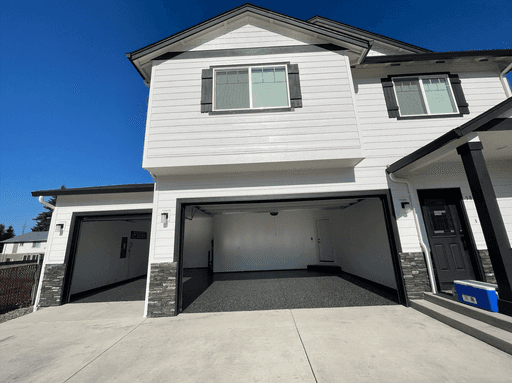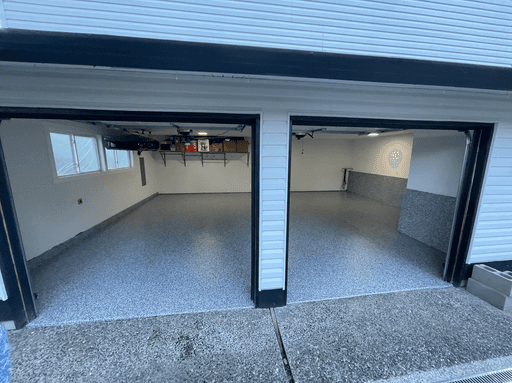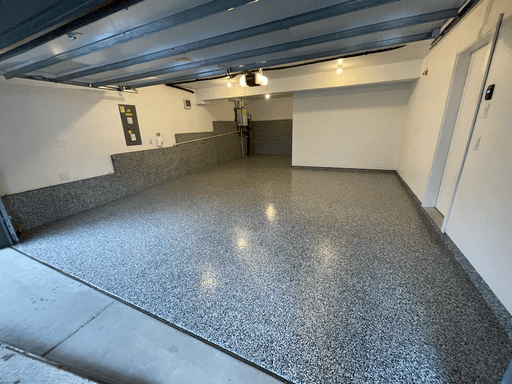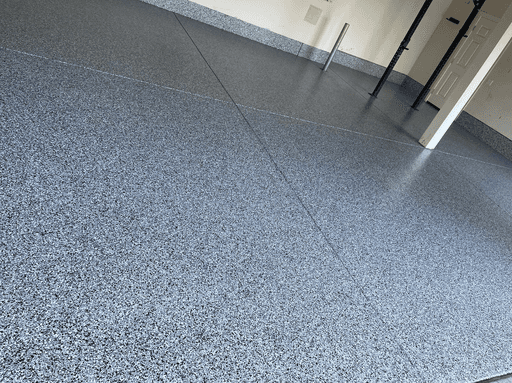Frequently Asked Questions
What is epoxy flooring and how does it work?
Epoxy flooring is a type of floor coating made of a mixture of epoxy resin and hardener. When applied to a surface, the mixture chemically reacts and hardens into a durable, glossy, and seamless surface. The resulting floor is resistant to wear and tear, chemicals, and stains, making it ideal for various commercial, industrial, and residential applications.
What are the benefits of epoxy flooring compared to other flooring options?
What types of surfaces can epoxy be applied to?
How much does epoxy flooring cost?
Is epoxy flooring durable and long-lasting?
Can epoxy flooring withstand heavy traffic and heavy equipment?
Is epoxy flooring slip-resistant?
Can epoxy flooring be used in wet environments?
What is epoxy flooring and how does it work?
Epoxy flooring is a type of floor coating made of a mixture of epoxy resin and hardener. When applied to a surface, the mixture chemically reacts and hardens into a durable, glossy, and seamless surface. The resulting floor is resistant to wear and tear, chemicals, and stains, making it ideal for various commercial, industrial, and residential applications.
What are the benefits of epoxy flooring compared to other flooring options?
What types of surfaces can epoxy be applied to?
How much does epoxy flooring cost?
Is epoxy flooring durable and long-lasting?
Can epoxy flooring withstand heavy traffic and heavy equipment?
Is epoxy flooring slip-resistant?
Can epoxy flooring be used in wet environments?
What is epoxy flooring and how does it work?
Epoxy flooring is a type of floor coating made of a mixture of epoxy resin and hardener. When applied to a surface, the mixture chemically reacts and hardens into a durable, glossy, and seamless surface. The resulting floor is resistant to wear and tear, chemicals, and stains, making it ideal for various commercial, industrial, and residential applications.
What are the benefits of epoxy flooring compared to other flooring options?
What types of surfaces can epoxy be applied to?
How much does epoxy flooring cost?
Is epoxy flooring durable and long-lasting?
Can epoxy flooring withstand heavy traffic and heavy equipment?
Is epoxy flooring slip-resistant?
Can epoxy flooring be used in wet environments?
What is epoxy flooring and how does it work?
Epoxy flooring is a type of floor coating made of a mixture of epoxy resin and hardener. When applied to a surface, the mixture chemically reacts and hardens into a durable, glossy, and seamless surface. The resulting floor is resistant to wear and tear, chemicals, and stains, making it ideal for various commercial, industrial, and residential applications.
What are the benefits of epoxy flooring compared to other flooring options?
What types of surfaces can epoxy be applied to?
How much does epoxy flooring cost?
Is epoxy flooring durable and long-lasting?
Can epoxy flooring withstand heavy traffic and heavy equipment?
Is epoxy flooring slip-resistant?
Can epoxy flooring be used in wet environments?
Your Trusted Washington Concrete Experts.
Your Trusted Washington Concrete Experts.
Committed to making your surfaces look new again.
Committed to making your surfaces look new again.






Request A Free Quote
All these cities and much more!
Seattle, WA
Bellevue, WA
Everett, WA
Kirkland, WA
Redmond, WA
Renton, WA
Lynnwood, WA
Bothell, WA
Shoreline, WA
Edmonds, WA
Issaquah, WA
Woodinville, WA
Kenmore, WA
Mill Creek, WA
Mukilteo, WA
Marysville, WA
Snohomish, WA
Lake Stevens, WA
Monroe, WA
Sammamish, WA
Duvall, WA
Mercer Island, WA
Maple Valley, WA
North Bend, WA
Mount Vernon, WA
Burlington, WA
Stanwood, WA
Arlington, WA
Bainbridge Island, WA
Poulsbo, WA
2025 © Epoxy Bros All Rights Reserved.
Request A Free Quote
All these cities and much more!
Seattle, WA
Bellevue, WA
Everett, WA
Kirkland, WA
Redmond, WA
Renton, WA
Lynnwood, WA
Bothell, WA
Shoreline, WA
Edmonds, WA
Issaquah, WA
Woodinville, WA
Kenmore, WA
Mill Creek, WA
Mukilteo, WA
Marysville, WA
Snohomish, WA
Lake Stevens, WA
Monroe, WA
Sammamish, WA
Duvall, WA
Mercer Island, WA
Maple Valley, WA
North Bend, WA
Mount Vernon, WA
Burlington, WA
Stanwood, WA
Arlington, WA
Bainbridge Island, WA
Poulsbo, WA
2025 © Epoxy Bros All Rights Reserved.
Request A Free Quote
All these cities and much more!
Seattle, WA
Bellevue, WA
Everett, WA
Kirkland, WA
Redmond, WA
Renton, WA
Lynnwood, WA
Bothell, WA
Shoreline, WA
Edmonds, WA
Issaquah, WA
Woodinville, WA
Kenmore, WA
Mill Creek, WA
Mukilteo, WA
Marysville, WA
Snohomish, WA
Lake Stevens, WA
Monroe, WA
Sammamish, WA
Duvall, WA
Mercer Island, WA
Maple Valley, WA
North Bend, WA
Mount Vernon, WA
Burlington, WA
Stanwood, WA
Arlington, WA
Bainbridge Island, WA
Poulsbo, WA
2025 © Epoxy Bros All Rights Reserved.
Request A Free Quote
All these cities and much more!
Seattle, WA
Bellevue, WA
Everett, WA
Kirkland, WA
Redmond, WA
Renton, WA
Lynnwood, WA
Bothell, WA
Shoreline, WA
Edmonds, WA
Issaquah, WA
Woodinville, WA
Kenmore, WA
Mill Creek, WA
Mukilteo, WA
Marysville, WA
Snohomish, WA
Lake Stevens, WA
Monroe, WA
Sammamish, WA
Duvall, WA
Mercer Island, WA
Maple Valley, WA
North Bend, WA
Mount Vernon, WA
Burlington, WA
Stanwood, WA
Arlington, WA
Bainbridge Island, WA
Poulsbo, WA
2025 © Epoxy Bros All Rights Reserved.




